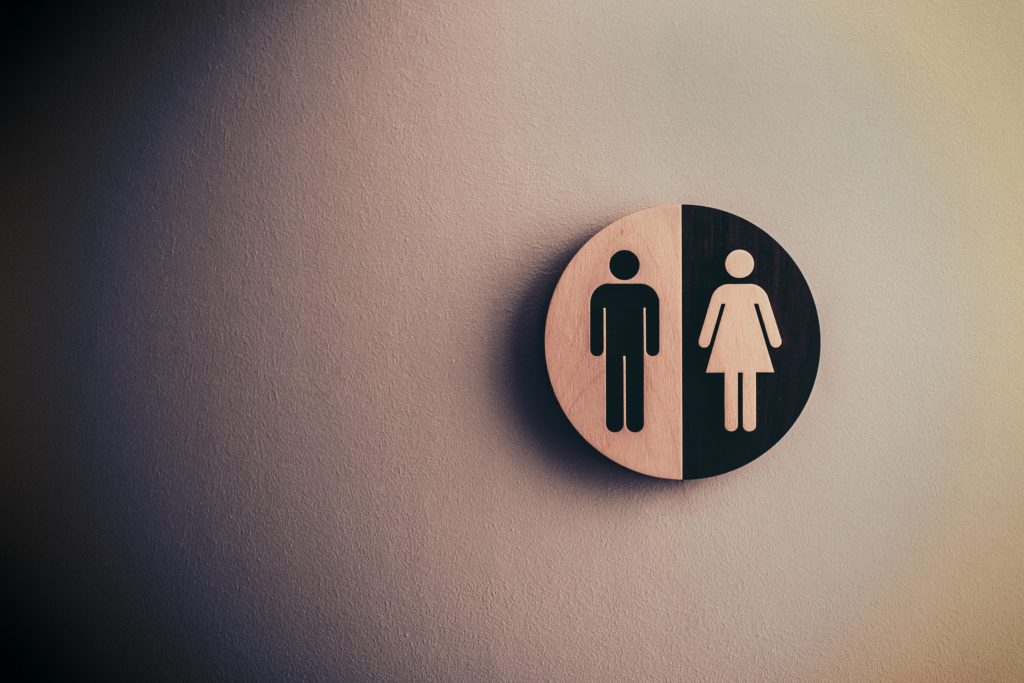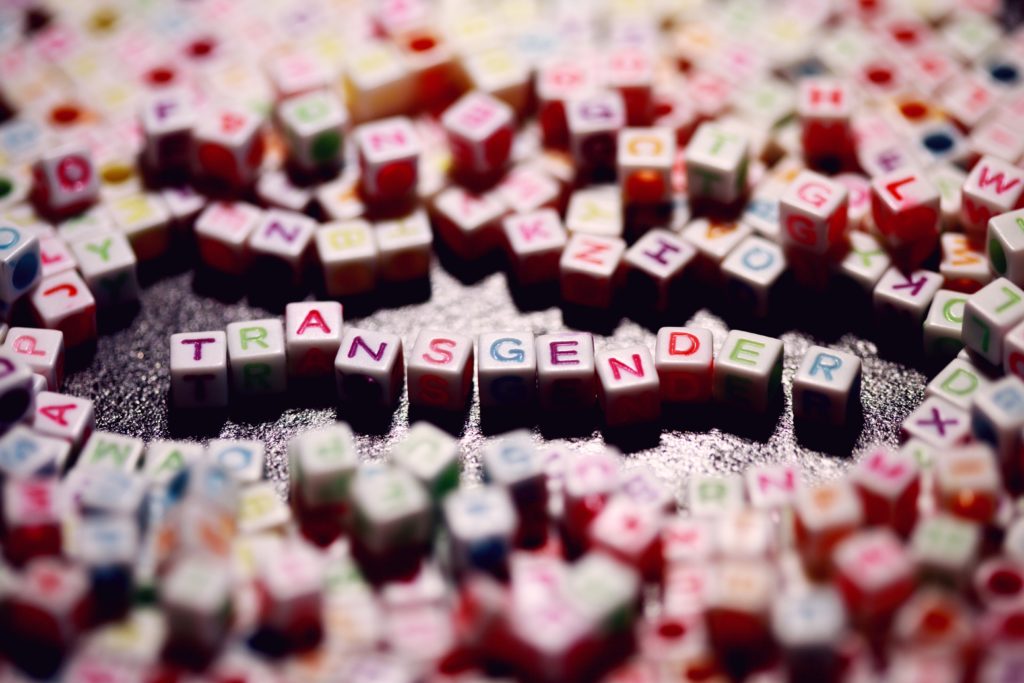
In an effort to provide a very basic understanding and an “elementary” introduction to the discussion of gender identity, the science behind it, how Christians should respond, and what the Bible actually says, I decided to create a “catch all” resource per your review and consideration. It is my hope that this article will serve as a tool directing you to pursue personal, in-depth research and engaged conversation within your community.
First off, what is sex and gender?
There is much confusion and manipulation of these terms because they are both related to each other and yet, are very different. Here are the SCIENTIFIC definitions.
Biological Sex: Scientifically speaking, biological sex refers to the gametes, which are mature reproductive cells. Only two types of gametes exist: small gametes that are produced by males and are called sperm and large gametes that are produced by females and are called eggs. There are no other options or types. Therefore, sex is binary and not on a spectrum.
Another little side note to add on biological sex is that sex is what is identified when a baby is in utero. Technically, the ever-popular “gender reveal parties” should be called, “sex reveal parties,” but for obvious reasons, a “sex reveal party” would come across as grossly inappropriate.
Gender: Gender is defined as how one feels or expresses their sex and is best known as the qualities or attributes of being masculine or feminine. Contrary to what society wants you to believe, gender is not a social construct but is a part of one’s biological make-up. The problem is that culture or society often dictate, assign, or encourage certain gender qualities to be either masculine or feminine.
Specific traits that are deemed “masculine” or “feminine” are culturally defined but the traits an individual gravitates towards are based on the biological sex differences in the brain of a male or a female. For example, the types of careers men and women (generally) pursue – men tend to pursue fields of math and science (such as engineering) while women tend to pursue careers that involved nurturing, caregiving or creativity (such as teaching or nursing). See the article link (I included below) that discusses why women don’t naturally gravitate towards STEM-related careers.
Clearly, there is a lot more to unpack with this and numerous studies have been done to support this differentiation between men and women. (Research the famous case of David Reimer, a biological male born in 1965.)
One statistic not often mentioned in the mainstream is this:
More than 99% of humans will relate to their biological sex. For the 1%* of those whose gender identity and biological sex do not align, they may experience gender dysphoria, may identify as transgender, or may possess the medical condition known as intersex (see the definitions of these terms below).
For further review:
- https://www.youtube.com/watch?v=2S0e-i117vY
- https://www.youtube.com/watch?v=xfO1veFs6Ho
- https://www.psychologytoday.com/ca/blog/rabble-rouser/201707/why-brilliant-girls-tend-favor-non-stem-careers

What does the Bible say?
The Bible contains some relevant information about human nature and the importance of biological sex.
- Human bodies are like sacred pieces of architecture.
- See Genesis 1 & 2
- Specifically, Genesis 1:27-28 (NIV): “So God created mankind in his own image, in the image of God he created them; male and female he created them. God blessed them and said to them, “Be fruitful and increase in number; fill the earth and subdue it. Rule over the fish in the sea and the birds in the sky and over every living creature that moves on the ground.”
- And, Genesis 2:21-24 (NIV): “So the Lord God caused the man to fall into a deep sleep; and while he was sleeping, he took one of the man’s ribs and then closed up the place with flesh.Then the Lord God made a woman from the rib he had taken out of the man, and he brought her to the man. The man said, “This is now bone of my bones and flesh of my flesh; she shall be called ‘woman,’ for she was taken out of man.” That is why a man leaves his father and mother and is united to his wife, and they become one flesh.”
- See Genesis 1 & 2
- God made male and female intentionally, complementary, and called humanity “good.”
- God created humanity in male and female forms. They are different, yet equal, and are not interchangeable. Both are needed and necessary to procreate. In such a beautiful picture of God’s covenant and commitment to His people, males and females physically connect together to become one flesh and create life.
- Jesus reaffirms Genesis 1:27 and Genesis 2:24.
- “Haven’t you read,” He replied, “that He who created them in the beginning made them male and female, and He also said, ‘For this reason a man will leave his father and mother and be joined to his wife, and the two will become one flesh’?” – Matthew 19:4-5 (CSB)
- Paul has a lot to say on this topic. Here are a few references…
- The body is sacred: 1 Corinthians 6:12-20
- The body and the soul cannot be separated: Romans 6:13, 16 and Romans 12:1
- Paul speaks against same-sex relationships: Romans 1:26-27

What do all of these (commonly used) gender terms mean?**
Binary: Simply defined, binary means two. As in, having two options for biological sex. This term is also associated with those who relate to typical male or female behaviors. Similar to cisgender (see below).
Non-Binary: A blanket term for those whose gender identities are not exclusively masculine or feminine. Also known as genderqueer, pangender, gender-expansive or polygender.
Agender/Genderless/Ungendered/Non-Gendered: A term that describes those who consider themselves to be without a gender.
Bigender: A person who has two gender identities either at the same time, at different times or situationally.
Bisexual: A person who is sexually attracted to two sexes or two genders, but not necessarily at the same time or equally. Of course, this term is somewhat outdated since the LBGTQ community now believes that more than two genders and two types of biological sex exist. See pansexual for reference.
Tri-Gender: A term for a non-binary gender identity that shifts between or among the behavior of three genders.
Cisgender: This term refers to individuals who have a match between their biological sex, their physical body, and gender identity. An example is a heterosexual male or a heterosexual female.
Gay: A biological male who is attracted to a biological male.
Lesbian: A biological female who is attracted a biological female.
Gender Identity: Refers to an individual’s personal sense of identity as either masculine or feminine. It is considered (by the LGBTQ community) to exist on a continuum and is not rooted in biological or physical expression.
Genderfluid: A term used for individuals who prefer to be flexible with their gender identity or expression.
Gynephilia: The attraction to women or femininity.
Autogynephilia: A paraphilia that describes a male’s desire to be sexually aroused by the thought of himself as a female. An example is a cross-dresser or a transvestite, not a drag queen.
Drag Queen: A gay man who dresses up as a woman, wearing either women’s clothing and/or makeup, to emulate culture’s exaggerated forms of femininity.
Heteronormative: The view that presumes heterosexual behavior is the norm for sexual practices. Moreover, it’s the belief that sexual and martial relations are meant to occur between heterosexual males and females. This is the Christian worldview.
Intergender: An individual who claims to have a gender identity that is in the middle of the binary genders of male and female or may be a mix of both male and female genders.
Intersex: Formally known as “hermaphrodite,” intersex is a general term for a variety of physical conditions a person may be born with. For instance, being born with sexual anatomy or chromosomes that don’t allow for an individual to be distinctively identified as male or female. An example would be an individual born with both the XX chromosome and a penis.
Pansexual: The term that describes not limiting oneself in sexual choice or preference regarding biological sex, gender or gender identity.
Transgender: An umbrella term for identifying or expressing a gender identity that doesn’t match one’s personal physical or biological sex.
Trans Man: A transgender person who was born a female but who (mentally, emotionally, cosmetically, or surgically) identifies as a man.
Trans Woman: A transgender person who was born a male but who (mentally, emotionally, cosmetically, or surgically) identifies as a woman.

Be concerned by the REAL statistics
Transgenderism can describe a variety of different experiences, identities, or assumptions.
A transgender person could relate to one or more of the following categories (or perhaps something different all together):
- Early-onset gender dysphoria
- Late/adolescent-onset gender dysphoria
- Non-gender dysphoria
- Rapid-onset gender dysphoria (see Abigail Shirer’s book, Irreversible Damage: The Transgender Craze Seducing Our Daughters)
- Autogynephilia (see the term described above)
- Trans de-transitioning
- Multiple mental health disorders
It is important to note that many individuals (in particular, teenagers) who identify as transgender have co-occuring mental health concerns or conditions such as anxiety, depression, and eating disorders. Furthermore, research reveals transgender individuals “experience borderline personality disorder, schizophrenia, OCD, ADHD, and autism spectrum disorder at higher rates than the general public.”***
There is also adequate research that has been conducted about trans individuals who either outgrow the “dysphoric feelings” (for lack of better description) or who de-transition out of transgenderism (this could be physically, mentally, emotionally, surgically or any combination I just mentioned). Additionally, there are studies that reveal misogyny and homophobia may also be to blame for the increase of popularity of transgenderism.
All of this to say, be cautious with what you hear in the mainstream information outlets. Be reminded that each individual is one-of-a-kind and no one should ever feel crammed into a box. Stereotyping what it means to be male or female is probably what drives me the most crazy when it comes to discussing gender identity.
Here are some helpful articles to review:
- https://williamsinstitute.law.ucla.edu/publications/trans-adults-united-states/
- www.hindawi.com/journals/schizort/2014/463757/
- www.dailysignal.com/2019/10/07/i-spent-a-year-as-a-trans-man-doctors-failed-me-at-every-turn/

Should a Christian use or affirm preferred pronouns?
In the early 2020s, I thought this question was very loaded and believed it was a question that is relational and situational. I have since repented of my former perspective, thanks to much prayer, further consideration, and the compelling testimony of former Lesbian-turned-Christian, Rosaria Butterfield.
Prior to 2020, I found myself in the position to address my preferred pronouns and I would gloss it over by not stating them and instead introducing myself by name. I am clearly a woman and who I am (my identity) is rooted in Christ. What was interesting to me is that the 20+ individuals I was working with at the time all openly stated their preferred pronouns and 100% of them all claimed pronouns that aligned with their biological sex.
My personal take is that it can be dangerous to affirm one’s preferred pronouns (see the analogy below for my reasoning).
I honor Jesus’ two greatest commandments – you should first love the Lord your God with all of your heart, soul, and mind and then love your neighbor as yourself (Matthew 22:37-40, Mark 12:30-31, Luke 10:27). To me, loving God first and above all things, people included, means to seek God’s heart and extend His love to others. God loves all of His created people and affirming one’s pronouns that do not align with one’s biological sex would not be loving God’s intent, design, and purpose for that individual. In fact, it would be very unloving and potentially damaging to that individual’s mental, emotional, physical, and most importantly, spiritual, well-being.
This is my personal stance, yet I do believe it is the biblically-sound position to take.
A Helpful Analogy
Similar to how the sinful bent of same-attraction can be related to addiction, the bent of gender dysphoria can be related to a mental health disorder, like an eating disorder.
Just like you would never take a recovering alcoholic bar-hopping, you would never support an anorexic by “feeding” their dysphoria of being fat and saying something like, “You probably shouldn’t eat that piece of cake if you want to fit in that dress.” That is, you would never do or say something harmful, hurtful or destructive if you honestly loved the individual.
Someone with an eating disorder genuinely believes they are fat or obese when in reality they are either a healthy weight for their body type or are skinny. Still, culture may play into their insecurity and make them feel another way or experience a true discomfort with how they look, feel or view their body.
Gender dysphoria is like this – individuals believe they are in the wrong body and that feeling is as real as the skin they are in.
Consider this analogy to assist in understanding gender dysphoria as well as the trend of transgenderism.

Key Takeaways
- Humans differ in how they are male and female. There is no one-size-fits-all for what it means to be male or female. God created every human to be uniquely made in His perfect image. God looked at all He made (including humanity) and deemed it “good.”
- Gender dysphoria is a real thing, just like same-sex attraction is a real thing. Both are a result of the sin and brokenness that exist in this world.
- Gender dysphoria does not always exist in an individual who may identify as transgender.
- I highly recommend obtaining a physical dictionary published prior to the year 2000, ideally one around the mid–20th-century. Words are constantly being redefined and reconstructed to fit into culture’s narrative, agenda or faux reality.
- When it comes to transgenderism, keep in mind this simple phrase by psychologist Mark Yarhouse: If you’ve met one transgender person, you’ve met one transgender person. No one person is the same. Each individual that has ever walked this planet is completely original and one-of-a-kind. Every struggle is unique and should be uniquely treated and appropriately addressed.
- If you’re having a hard time with understanding transgenderism or finding space in your heart to love or serve this community, put a face on the issue. There is a soul within every body and each human was created on purpose, with a purpose, and in the image of God. These individuals have as much value, purpose, and worth as you and me.
Recommended Podcast Episodes****
- The Megyn Kelly Show: Episode 12, interview with Abigail Shirer on the Teen Trans Trend; episode 31 with Dr. Debra Soh on the dangers of anti-science woke culture
- Relatable with Allie Beth Stuckey: Episode 340, interview with Dr. Debra Soh; episode 372, interview with Merrick Garland on gender and equity
- The Alisa Childers Podcast: Episode 62, interview with Clark Bates on the trend of Christians referring to God as a “she”
Recommended Books (click on each title for my full review):
- The End of Gender: Debunking the Myths About Sex and Identity in our Society by Dr. Debra Soh
- God and the Transgender Debate: What Does the Bible Actually Say About Gender Indentity? By Andrew T. Walker
- Sex Scandal: The Drive to Abolish Male and Female by Ashley McGuire
- Mama Bear Apologetics Guide to Sexuality: Empowering Your Kids to Understand and Live Out God’s Design by Hillary Morgan Ferrer
Other Websites to Consider:
- Family Policy Alliance: For all things Faith, Family, and Freedom; Check out the public policies that are in the government’s pipeline and the direct links to contact your local representatives.
NOTES:
*This statement was taken from the book, The End of Gender by Dr. Debra Soh, pg. 22-23
**This list was adapted from the Gospel Coalition. Click here to view the article.
***This quote was taken from the book, Embodied by Preston Sprinkle, pg. 55
****All of the podcast episodes I recommended above are episodes I have personally listened to.